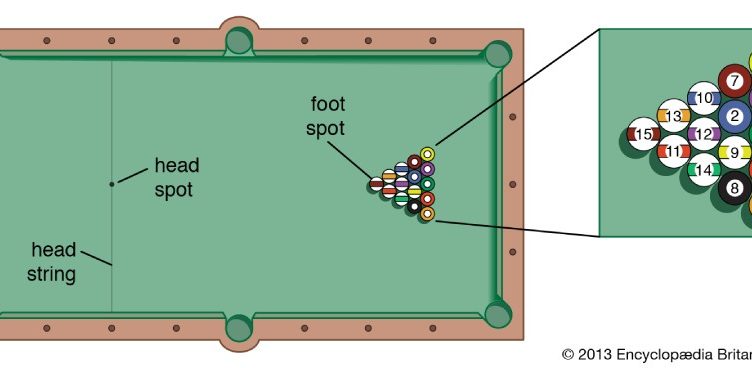For anyone who just begins the adventure to learn how to play pool or billiards, the learning curve is enormous. There are so many pool and billiard words, it can be difficult to learn everything.
The right position, reference techniques, angles, and strategies are all intimidating at first.
Fortunately, the internet made it much easier to learn properly than it required months or years to hang around in the local pool hall to discover in the past.
But to make full use of this vast resource, the standard billion terms and phrases must be understood.
Basics Terms & Terms
8-Ball.
A shared two-player pool game, where participants get into the pocket all their balls before hitting the 8-ball pocket. Learn more here about eight-ball.
9-Ball.
A common two-player pool game in which players have to hit all the balls to the pockets. The final player, the 9-ball player, wins. Find out more here about 9-ball.
Bridge. The way you place your supporting hand to hold the pool mark is your bridge. Two common strategies exist: an open or closed one.
Read More: Bumper Pool Rules How To Play
Bridge.
A bridge is also a device for supporting the cue stick during difficult shots. It’s termed a mechanical bridge sometimes.
Chalk.
Pool crab is used to prevent slipping the tip of a cue when the cue ball is struck.
Clean The Table.
This occurs when a player drops one ball after another until the final ball is pocketed and the game is won. This is commonly called table running.
Cue Stick. Cue Stick.
This is the usage of stick players to hit a cue ball.
Cue Ball.
This is a player’s ball with a hint. It’s solid white in the pool game, but one player can play a spotted or even a yellow cue ball with carom billiards.
Object Ball.
A player’s ball aims at the cue ball. Sometimes an object ball is called a target ball.
Open table. Open table.
The target balls have not yet been identified. Every player can sink on the table any object ball.
Rack.
The frame was intended to help the object balls location before the game begins. It is generally in the form of a triangle, however various shapes such as diamonds can be found. The word “it’s your turn to rack” can be used as a verb. Learn how to get right here.
Scratch.
When a cue ball enters a pocket, a scratch happens. In several pool games, the scratched player needs to return a previously poked object ball to the football field, and the other player has a ball in their hand. That means he can put the hint on the table for his next round.
Read More: How To Dart Board Set-Ups At Home
Solids.
Balls of objects of a solid color. Solids numbered between one and eight. These are sometimes referred to as 8-ball lows.
Stripes.
Object balls that are white and have varied color bands around their center. Stripes numbered between 9 to 15. Some players call stripes high in 8-ball.
To Bag A Ball.
To hit the cue ball so that an object ball enters a pocket.
Pool Table Anatomy
Cushions.
The inside sides of the table are surrounded by coils.
Diamonds.
Three diamonds or markings are uniformly positioned on rails between each bag. Players can use them to fit a shot.
The Kitchen.
This is the area between the head string and the headrail. The player who breaks can put the ball in the kitchen anyplace.
Long Rails.
The two wider edges of the table are the long rails. You could hear players calling them side rails.
Pockets.
Pockets are the six pool players used to sink balls, called pockets. Carom tables don’t have pockets. The pockets are known as corner pockets in the four corners of a pool table. The pockets are termed side pockets in the midst of the long rails.
Read More: Game Waterfall Rules How To Play
Short Rails.
The two narrower edges of the table are the short rails. At the beginning of the game, you rack the balls on the short track. It’s also called the foot rail. The other end of the table is often referred to as the headrail.
Spots.
On a pool table, there are two marked areas. The head point is in the center of the head string. The base is in the center of the foot string and denotes where the balls are racked or a sunken object ball is returned to the table.
Strings.
Strings are two imaginary lines on the table perpendicular to the heads and feet, and all of them are referred to as the head string and the foot string.
If you love reading this article, then you will more articles on my site, FarhanTech

